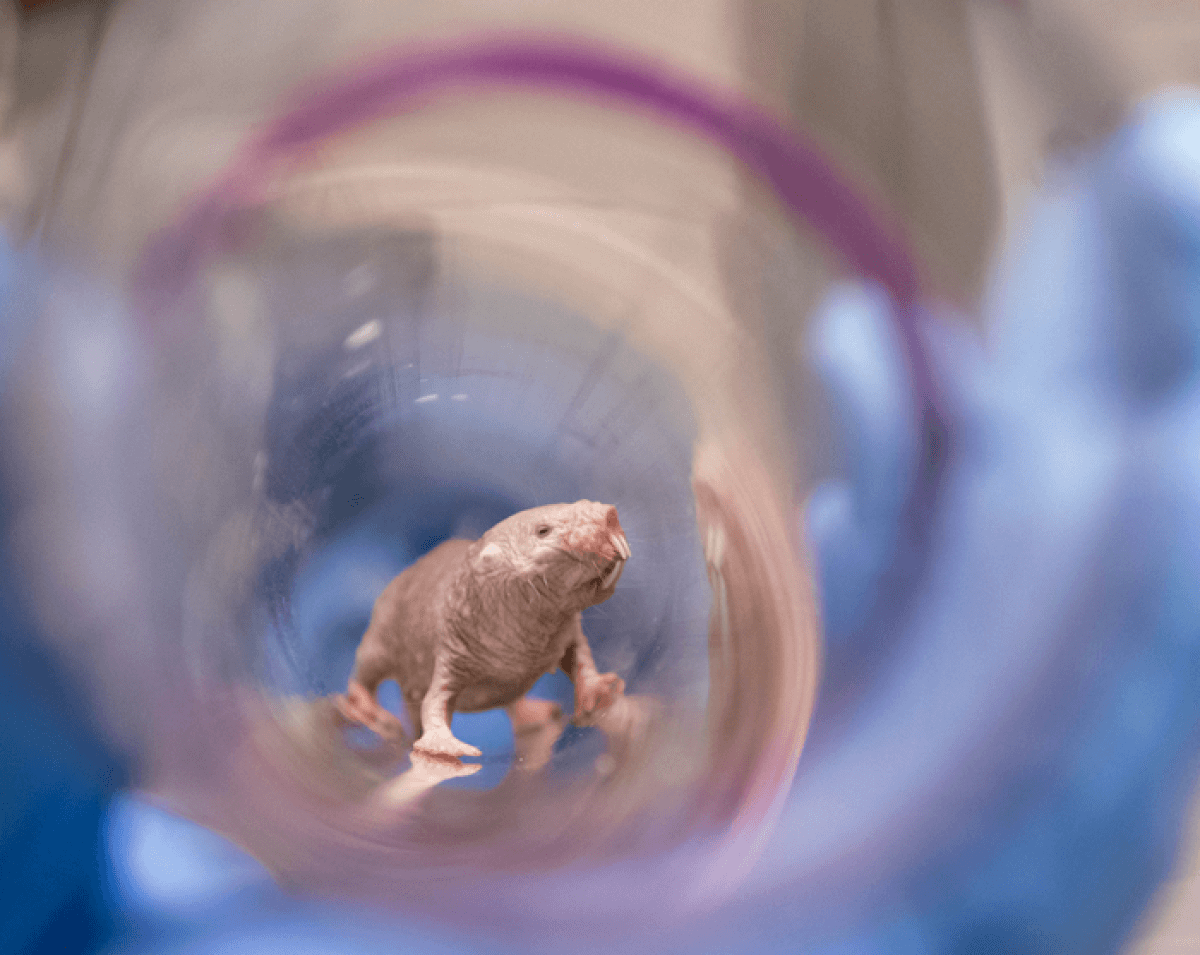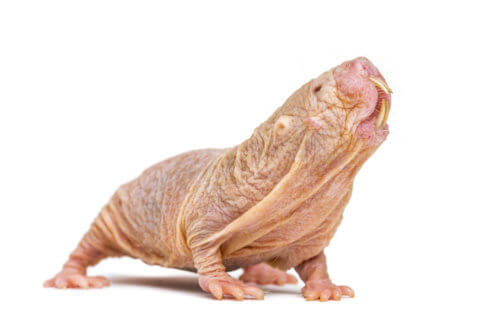PITTSBURGH — Humans, like many other mammals, can only reproduce up to a certain age. Warm-blooded creatures all become less fertile with age — well, except for naked mole-rats. Incredibly, a new study finds these rodents are capable of reproducing throughout their remarkably long lifespans. Now, researchers are finally shedding some light on the unique processes that facilitate the astounding fertility of naked mole-rat females. Study authors from the University of Pittsburgh add these findings could one day lead to new therapies for people looking to have children later in life.
“Naked mole-rats are the weirdest mammals,” says lead author Miguel Brieño-Enríquez, M.D., Ph.D., assistant professor at Magee-Womens Research Institute and the University of Pittsburgh School of Medicine’s Department of Obstetrics, Gynecology and Reproductive Sciences, in a media release. “They’re the longest-lived rodent, they almost never get cancer, they don’t feel pain like other mammals, they live in underground colonies, and only the queen can have babies. But to me, the most amazing thing is that they never stop having babies — they don’t have a drop in fertility as they age. We want to understand how they do this.”
For the majority of mammals, including both humans and mice, females are born with a finite number of egg cells, which are produced in utero through a process called oogenesis. Since everyone’s limited supply of eggs gradually depletes over time, fertility drops off the older we get. Naked mole-rats, on the other hand, can keep breeding right through old age. This special ability suggests the rodents possess some kind of unique ability that preserves their ovarian reserve and fertility.
“There are three possibilities for how they do this: They are born with a lot of egg cells, not as many of these cells die, or they continue to create more egg cells after birth,” Dr. Brieño-Enríquez explains. “My favorite hypothesis is that they use a cocktail of all three.”

Naked mole-rats have a lifespan 8 times longer than mice
Sure enough, Dr. Brieño-Enríquez and his collaborators found evidence for each one of the three processes. The research team compared ovaries from naked mole-rats and mice across various stages of development. Despite being very similar in size, mice live for around four years at most and start to lose their fertility at just nine months-old. Naked mole-rats usually live for 30 years or longer!
Study authors discovered naked mole-rat females have exceptionally large numbers of egg cells in comparison to mice, and these cells die less often. For instance, at eight days-old, a naked mole-rat female has on average 1.5 million egg cells — which is roughly 95 times more than mice of the same age.
Moreover, the study reveals that oogenesis happens postnatally in naked mole-rats. Egg precursor cells were actively dividing in three-month-old animals, and study authors continued to see these precursors among 10-year-old animals. These findings indicate that oogenesis could continue throughout their lives.
“This finding is extraordinary,” comments senior author Ned Place, Ph.D., M.D., professor at the Cornell University College of Veterinary Medicine. “It challenges the dogma that was established nearly 70 years ago, which stated female mammals are endowed with a finite number of eggs before or shortly after birth, without any additions being made to the ovarian reserve thereafter.”
Being ‘queen’ leads to amazing fertility
Naked mole-rats usually live in colonies numbering anywhere from several dozen to hundreds of rodents. Just like bees or ants, colony members divvy up tasks such as providing defense, digging tunnels, caring for young, and food collection. Only one dominant female in each colony can breed, and the head female actually suppresses reproduction in other females to maintain her queenly status.
“Unlike bees or ants, a female naked mole-rat is not born a queen,” Dr. Brieño-Enríquez says. “When the queen dies or is removed from the colony, subordinate females compete to take her place and become reproductively activated. Any girl can become a queen.”
To analyze and learn more about this process, the researchers removed three-year-old females from the colony in order to prompt reproductive activation and compare these new queens with subordinate females. This led to the discovery that non-breeding subordinates had egg precursor cells in their ovaries, yet the cells only started dividing after a transition to queen.
“This is important because if we can figure out how they’re able to do this, we might be able to develop new drug targets or techniques to help human health,” Dr. Brieño-Enríquez notes. “Even though humans are living longer, menopause still happens at the same age. We hope to use what we are learning from the naked mole-rat to protect ovary function later in life and prolong fertility.”
“But the ovary is more than just a baby factory,” the researcher concludes. “Ovary health influences cancer risk, heart health and even lifespan. Better understanding of the ovary could help us find ways to improve overall health.”
The findings appear in the journal Nature Communications.

